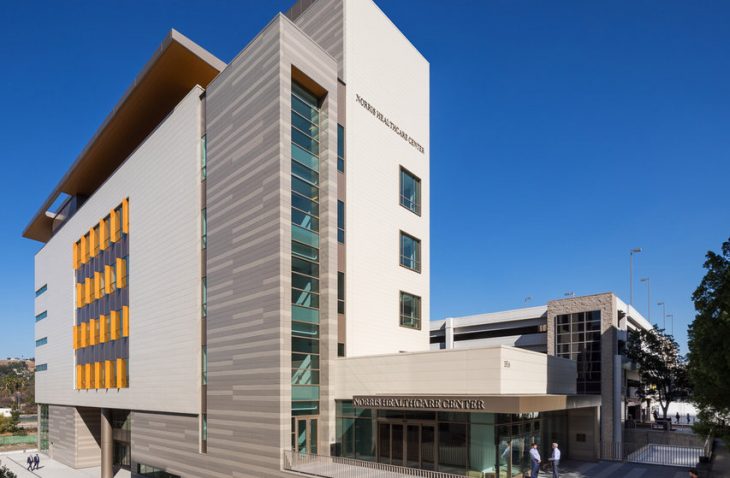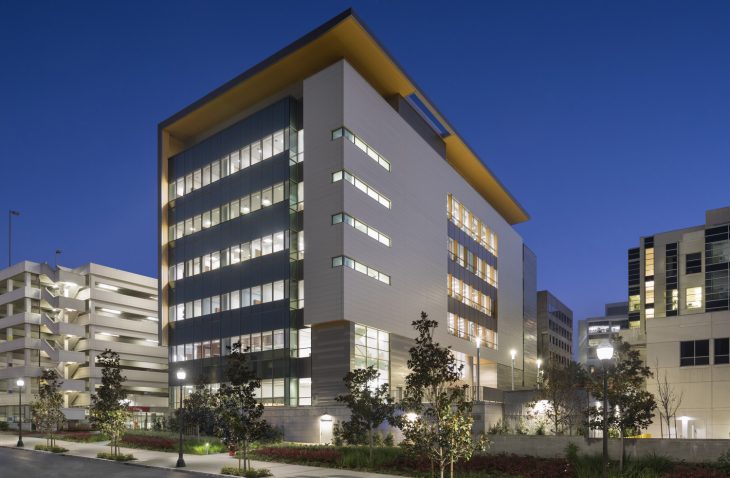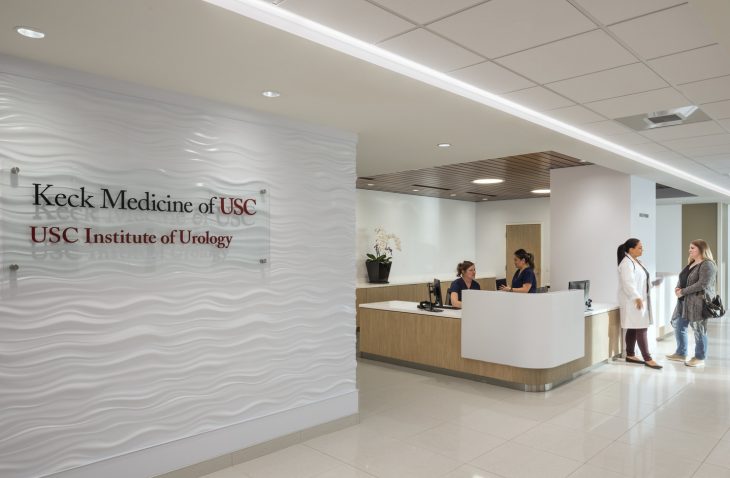New Healthcare Center
The University of Southern California’s Norris Healthcare Center (NHC), part of the Keck School of Medicine, is a widely recognized regional and national resource for cancer research, treatment, prevention, and education. In an effort to expand its outpatient cancer care services, USC Health decided to build a new seven-story consultation center, comprised of six
levels above-grade and a below-grade outpatient care facility.
A 490-stall parking structure was also constructed next to the facility to support its patients. As an OSHPD 3 healthcare center (with OSHPD 1 components), it also supports various other services as well including women’s specialty care, urology, radiation, oncology, endoscopy, pharmacy, laboratory, multi-disciplinary clinics, an infusion day hospital, administrative/business offices, food services, and various support functions. The building also houses two OSHPD 3 operating rooms where surgeons conduct a variety of transplant procedures, including heart, kidney, liver, lung and marrow transplants.
IMEG engineers were contracted as a subconsultant to provide mechanical, electrical, plumbing, and structural designs for all HVAC, emergency power, specialty lighting, fire protection/fire alarm, sanitary sewer, medical gas, and high voltage/low voltage systems to support the entire facility. The structure of the building is considered a “Special Moment” steel frame with lightweight concrete above a metal deck for flooring. Additionally, the building has several underground OR rooms, requiring sensitive vibration framing with vehicle traffic above.
Over the course of design, challenges arose on the project including tight job site constraints and an owner-initiated full building reprogram, which affected every floor and resulted in intensive re-programing costs, schedule re-sequencing, and extensive BIM and value engineering efforts. Challenges on the project were concerning the OSHPD 3 and IT equipment infrastructure:
- OSHPD 3 facets of the building were reviewed by City of Los Angeles, as it had become city’s responsibility to review OSHPD 3 projects. However, the City didn’t have the expertise on certain trades, including medical gas systems. As a result, our engineers ended up working with the owner to take precautions of all aspects, following OSHPD 1’s procedures including medical gas piping documentation procedures, testing, and certifying.
- With the length of the project design and construction, the power/cooling demands for IT equipment and associated infrastructure changed drastically. IMEG engineers allocated the adequate power and cooling capacity to have the flexibility to deal with the final equipment demand changes without grossly oversizing the power distribution on both normal and emergency sides, generator and cooling systems.










